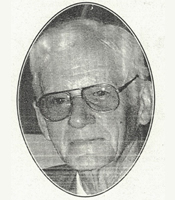Legends
David Miller
 |
David Fotheringham Miller 16th November 1919 – 18th May 2009 Passion for flying lasted a lifetime David Fotheringham Miller was born at Mt Pleasant hospital to James and Elizabeth Miller and spent his early life in the country, including at Springton. He attended Birdwood High School and observed with awe early aircraft. |
|
Apart from his family, David had two great loves - the farm and flying. He applied to the airforce in 1939 and started flying training in jabuary 1940 at Parafield. Two days after joining he had his first flight, in a Gypsy Moth biplane. It was a familiarisation flight with a crusty World War I veteran who took David upto 900m, did a few loops and flick rolls, then swooped to ground level, "beat up" some horses in a paddockand flew at 15m down the beach, past St Kilda and back to Parafield - all a thrilling experience for a farm boy. David went to Point Cook for advanced flying training in a Hawker Demon, an obsolete biplane fighter. He was awarded his pilot wings in May 1940. His first posting was to Laverton to fly Avro Ansons. He was a test pilot for these newly assembled aircraft, which arrived from England in crates, and was also adjutant for the unit. In December 1940 they shifted to Bankstown, NSW, which had just been bulldozed out of the scrub. He wanted to fly an "operational" aircraft and applied a few times to transfer to England in the Battle of Britian, but the Allies needed pilots trained, so in February 9141 David was posted to the Flying Instructors Course at Camden. For his effors and achievemnets in the instructional role he was awarded the Air Force Cross. He met Mary Furner in Springton in 1942 while home on leave, but it was not untill after the war, in 1948, that they married. They went on to have four childrens. In mid-1943 David was posted to an operational unit in Port Moresby and later Nadzab in New Guinea for conversion to the B24 Liberator, a large, four-engine heavy bomber. He was then posted back to the Northern Territiry to another American unit, the 380th Bomb Group, to fly 160 hours of operations with them before helping to form up 23 Squardron for the RAAF at Leyburn. David them flew operational bombing, reconnaissance and evacuation of prisoner-of-war sorties throughout Indonesia, Borneo and New Guinea. The mission were flown out of Darwin's Long and Fenton airflieds and finally Morotai, part of Indonesia, as the Japanese were pushed further north. David become the commanding officer of 23 Squadron and led many low-level strikes on Japanese airfileds in Java. He left the RAAF in January 1946 and four days later joined Australian National Airways. He remainded with the airline - later called Ansett - untill his retirement in 1979. He flew almost exclusively Douglas aircraft, ending up with almost 12,000 hours flying on the DC2 and DC3. In 1967 Ansett introduced the DC9 jet and David was one of the first in the company to operate it. He went to the U.S. to do his conversion with Douglas and then spent a month or two with Air Canada. David loved the DC9, which with the Boeing 727 revolutionised air travel in Australia. He finished on the DC9 as chief check captain. As in the air force, David trained a large number of ANA and Ansett pilots with his usual level of enthusiasm and excellence. He was awarded a Master Air Pilot certificate, accumulated more than 26,500 flying hours and was the first president of the South Australian Retired Pilot Associaiton. David also loved to play tennis, into his 80s, and played cricket with Payneham. Source: The Adelaide Advertiser - May 2009 |
|

 Home
Home